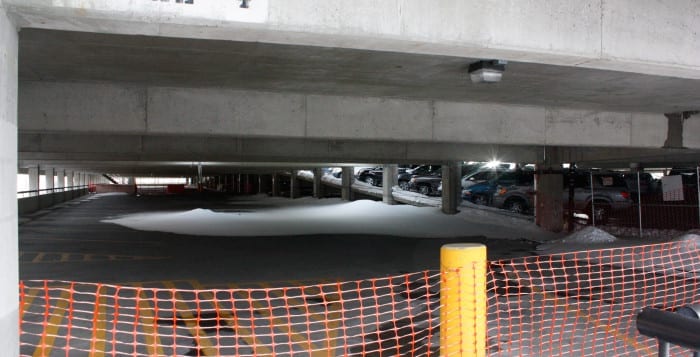Huntington Town is slated this week to reopen more than half of the 228 parking spaces at the Huntington Long Island Rail Road station’s south parking garage it closed off earlier this year.
The town will reopen 116 spaces on the fourth level of the garage on Wednesday, April 8, it announced in a Monday statement. The spaces were closed as part of an emergency repair project on the fifth level, where there are still currently 112 spaces out of commission.
Parking stalls on the fourth level were closed off “as a safety precaution” because they were located directly underneath work that included removing parking deck concrete in certain areas, repairing cables and structural reinforcement, according to the town.
“The project has reached a stage where the remaining work no longer presents a potential falling debris hazard to persons and vehicles on the fourth level, allowing for the spaces to reopen,” the town said in a statement.Spaces on the fifth level are scheduled to reopen on April 20.





